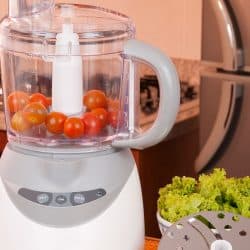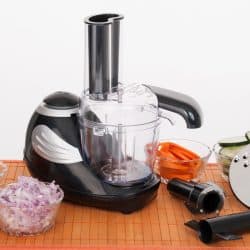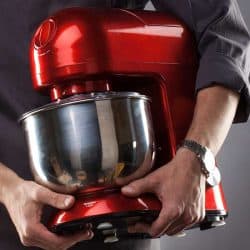As an adult, buying a new kitchen appliance like a Kitchenaid food processor can be exciting. With that, you want to use it immediately to make all sorts of delicious recipes.
But before you start, let's look at how to quickly and easily get started using your new appliance.
To turn on your Kitchenaid food processor, follow these steps:
- Wash and dry the bowl and blade.
- Place bowl on base.
- Put the blade in the bowl.
- Place food in the bowl.
- Lock in the lid on the bowl.
- Plug in the food processor.
- Choose chop or puree.
- Press the pulse button till desired consistency.
See? It's not hard at all to get started using your new Kitchenaid food processor! Nonetheless, we will walk you through each step in detail to ensure your food processing experience is a success from start to finish.
In addition, we will answer other frequently asked questions about Kitchenaid food processors, so read on!
![single electric food processor at retail store shelf, defocused background - How Do I Turn On Kitchenaid Food Processor [Quickly & Easily]](https://kitchenseer.com/wp-content/uploads/2022/10/single-electric-food-processor-at-retail-store-shelf-defocused-background-How-Do-I-Turn-On-Kitchenaid-Food-Pr.png)
How Do You Start A Kitchenaid Food Processor?
The Kitchenaid food processor is a nice addition to any kitchen. It is a versatile tool that can be used for chopping, pureeing, and grinding various food items.
If you are new to using a food processor, you may wonder how to start. Follow the steps below, and you'll be using your Kitchenaid food processor like a pro in no time!
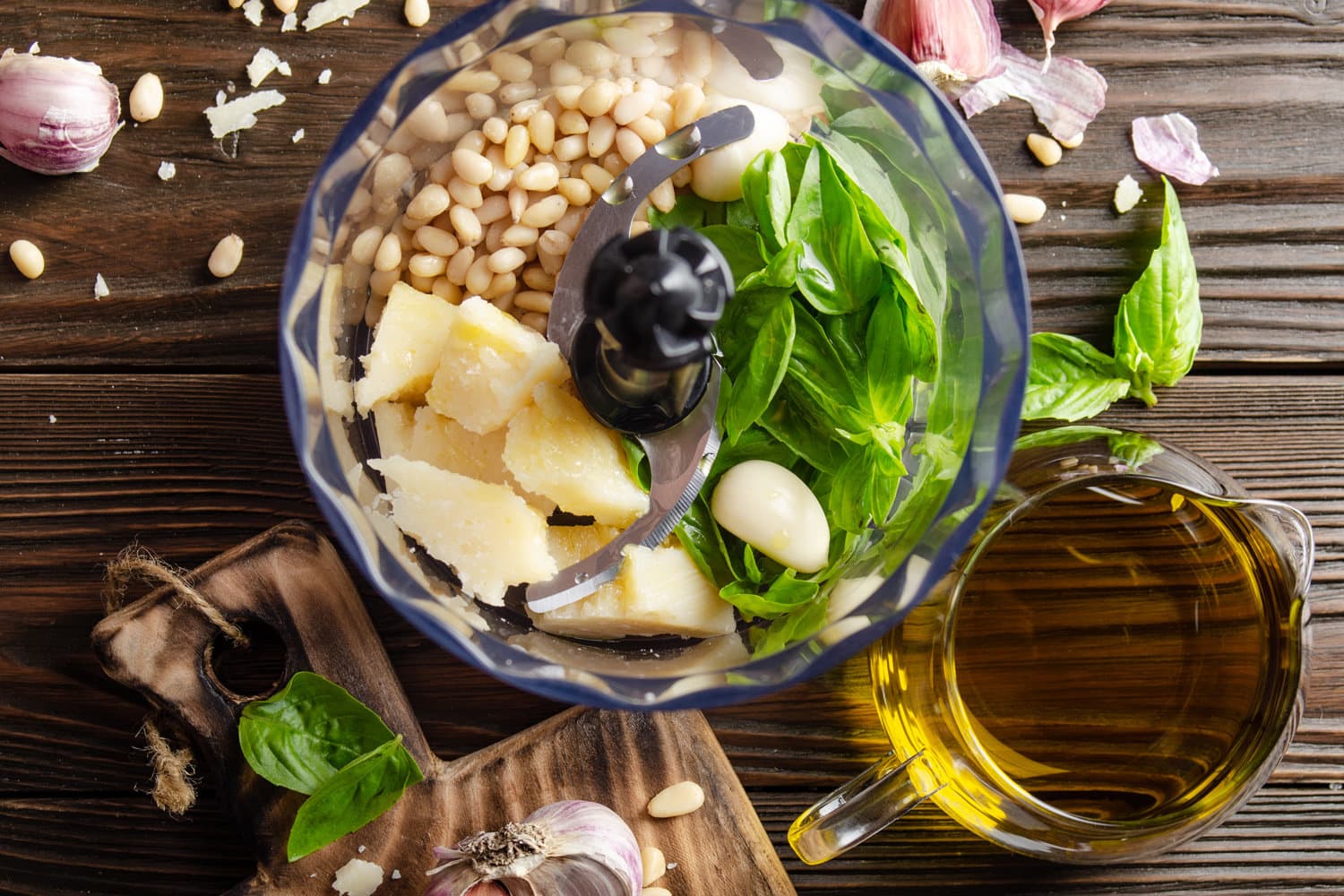
Wash And Dry Food Processor Bowl And Blade
When you first take the Kitchenaid food processor out of the box, you must wash and dry the bowl and blade. This is an important step, as it ensures that your food is processed in a clean environment.
To wash the bowl and blade, run them under hot water and use mild soap. Once they are clean, dry them off with a clean towel.
You can also put the Kitchenaid parts into the dishwasher, but it is essential to ensure they are placed on the top rack. This will prevent the heat from damaging the plastic parts.
Place Bowl On Base
Once the bowl and blade are dry, it's time to assemble your food processor. To do this, simply place the bowl onto the base of the machine and turn it counterclockwise. The bowl will lock into place when it is in the correct position.
Put Blade Into The Bowl
Once the bowl is secured onto the base, you can now place the blade into the bowl. The blade is simply dropped onto the center post in the bowl. There is no need to turn it in, just ensure it is lined up correctly and drop it in.
Place Food Into The Bowl
Once the blade is in place and the bowl is secure, you can now start adding your food into the bowl. It is important to chop up larger pieces of food before adding them to the food processor, as this will make it easier for the machine to process them.
Lock In The Lid On The Bowl
Once the blade is in place, you can now lock in the lid on the bowl. To do this, simply line up the lid notch with the bowl handle. If you don't, you won't be able to lock it in place or start the machine.
Plug In The Kitchenaid Food Processor
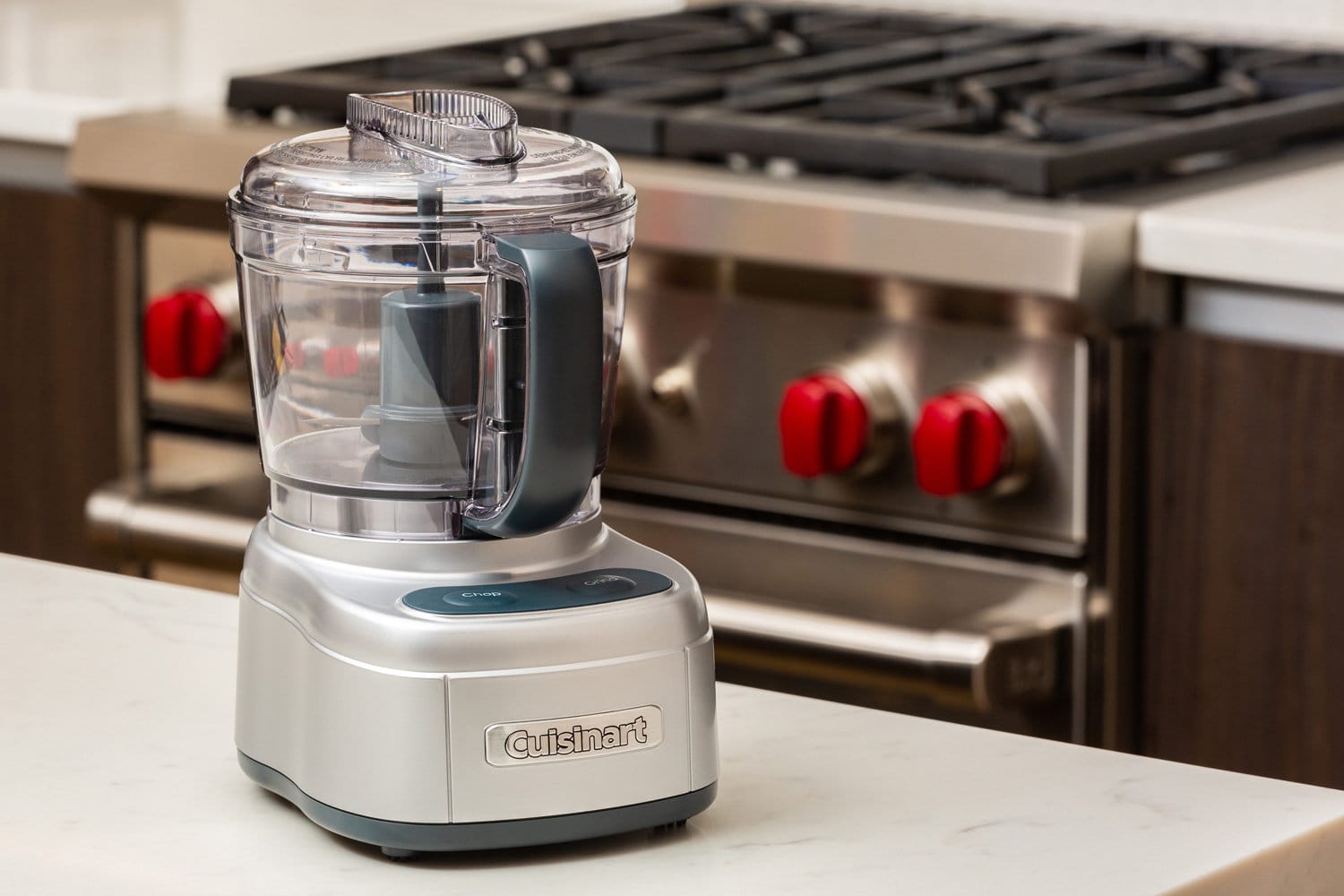
Now, you can plug in the Kitchenaid food processor. While it is unlikely it will turn on its own, it's best to do this after the blade and food are in place.
Select Chop Or Puree
On the front of the Kitchenaid food processor is a switch that says "Chop" or "Puree." Simply select which one you want, depending on the consistency you are looking for.
If you want your food to be chopped into small pieces, select the "chop" setting. If you want it to be a smooth consistency, like a puree, select the "puree" setting.
Press The Pulse Button
Once you have selected your chop or puree setting, it's time to start the machine. To do this, simply press down on the large "Pulse" button. The "Pulse" button is on the lid, directly above the bowl's handle.
You can press and hold or press and release the "Pulse" button. If you press and hold, the food processor will continue to run until you release the button. If you press and release, it will pulse for one second and then stop.
Continue to pulse the button until your food has reached your desired consistency. Now, you can add it to your recipe or enjoy it!
Why Does My Kitchenaid Food Processor Not Turn On?
If your Kitchenaid food processor isn't turning on, it could be due to the following:
Not Plugged In
A common mistake is to forget to plug in the food processor. Check that it is plugged into a working outlet before troubleshooting further.
The outlet could also be faulty. Try plugging the food processor into another outlet to see if it turns on. If it does, you know the outlet is the problem, not the food processor.
Try unplugging the food processor and clicking the "reset" button on the outlet. Sometimes this is a quick fix that will solve the problem. You could also have a tripped breaker. In this case, you will need to reset the breaker in your home's electrical panel.
Improper Assembly
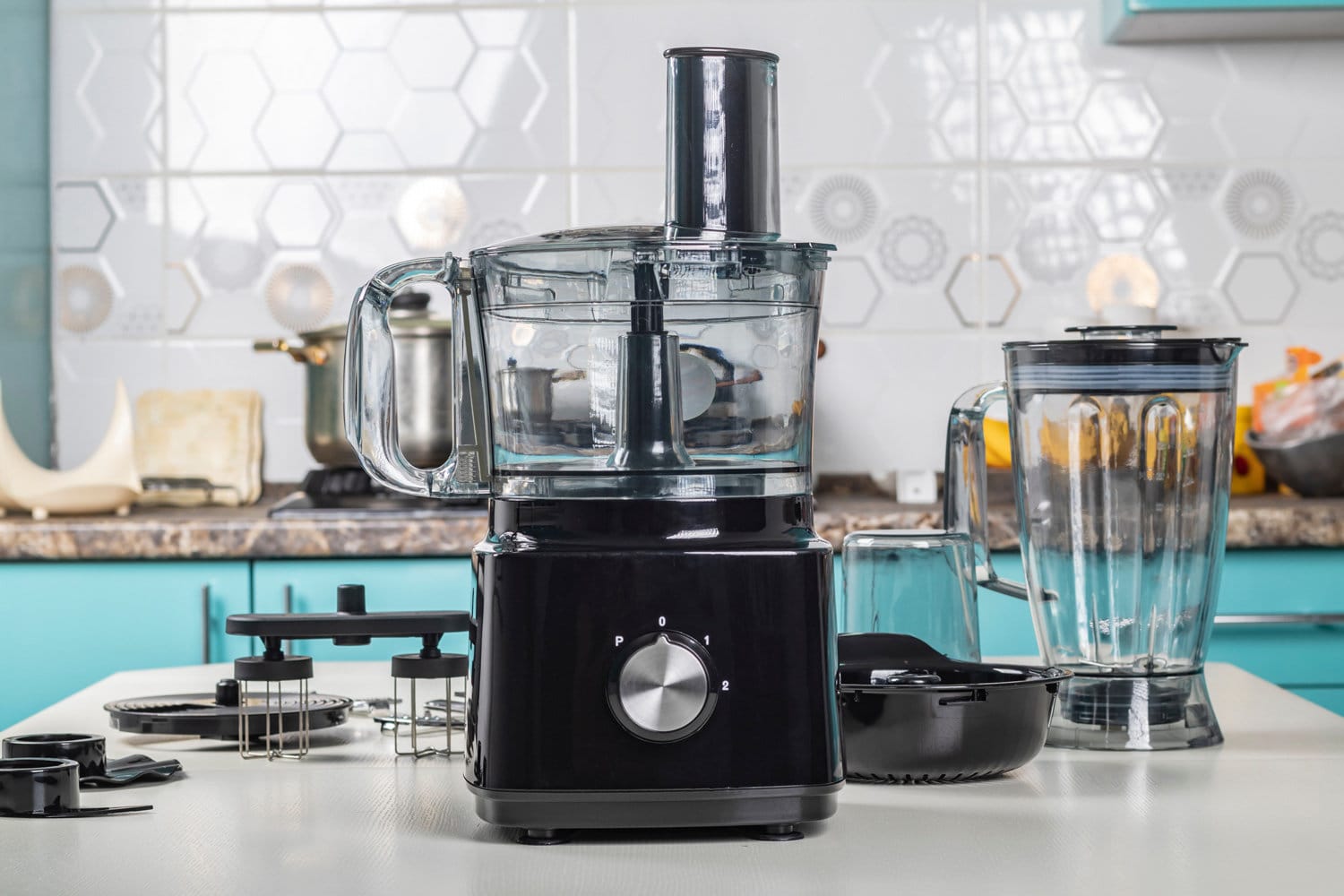
As you can see from our steps above, the Kitchenaid food processor must be assembled correctly for it to work. If even one step is missed, it could cause the food processor not to turn on.
Ensure that the bowl is locked in place on the base and that the blade is secure in the bowl. The pulse button on the lid needs to be aligned correctly with the bowl's handle.
Once you have confirmed that all these parts are correctly assembled, try plugging in the food processor again.
Electrical Issue
Another reason your Kitchenaid food processor might not turn on is an electrical issue. Check that all the fuses and power cords are in working order. If you need to, consult the owner's manual for troubleshooting tips specific to your model.
A common sign of a bad fuse or wire connection is the food processor only running intermittently. If this is the case, you will need to replace the fuse or wire.
Failed Motor
If you have checked and verified that the food processor is appropriately plugged in and assembled, but it still won't turn on, there could be an issue with the motor.
If the motor has failed, it will need to be replaced. We recommend taking it to a certified Kitchenaid repair center to have this done.
If your Kitchenaid food processor is under warranty, you may be able to get it repaired or replaced for free. Check your warranty information to see if this is an option.
Read More: Kitchen Aid Food Processor Not Working – What Could Be Wrong?
Why Does My Kitchenaid Food Processor Smell?
There are a couple of reasons why your Kitchenaid food processor might smell. First, if it is a new food processor, it is common for a "new machine" smell. This should dissipate after a few uses.
That's why cleaning your food processor before first use is so important.
If you have been using your food processor for a while and it starts to smell, it could be due to food residue build-up.
Over time, bits of food can get trapped in the nooks and crannies of the machine and start to rot. This will cause an unpleasant smell.
Ensure that you are cleaning your food processor regularly. If the smell persists, try soaking all the removable parts in hot, soapy water for a few hours.
You could also add ½ cup of white vinegar to the water to help break down any tough residue.
Lastly, a dull blade is another common cause of bad smells. If your blade is starting to get dull, the motor has to work harder to chop food. This can cause the motor to overheat and have a burning smell.
If you think your blade is the problem, remove it and replace it with a new one. If the smell persists, the issue is likely with the motor, and you will need to take it in for repairs.
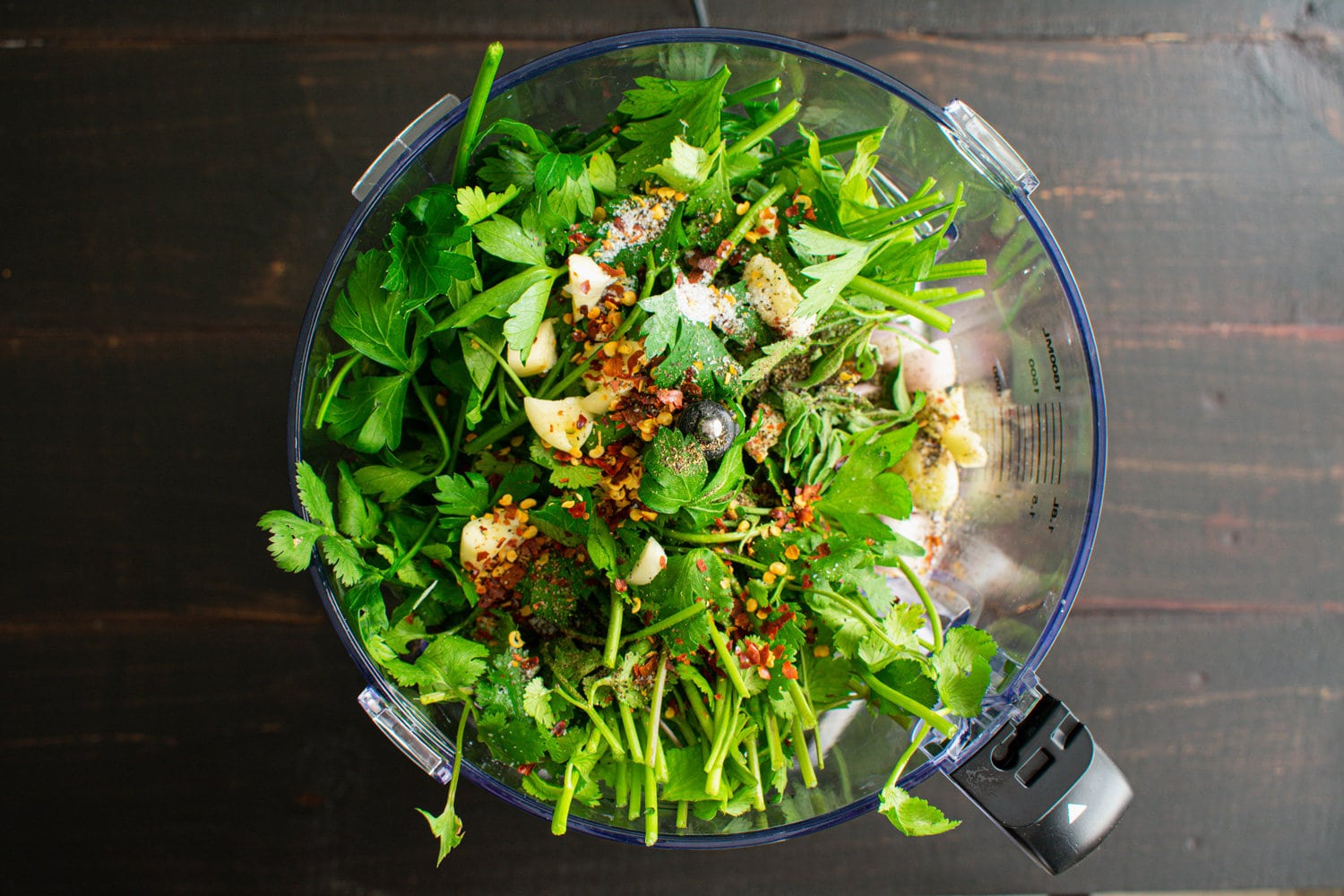
Final Thoughts
Overall, assembling and starting a Kitchenaid food processor is straightforward. However, each step must be done correctly to turn on and function properly. If yours won't start, troubleshoot the issue by following the steps above.
Made it to the end? Here are other articles you might find helpful:
Kitchenaid Dishwasher Beeping But Not Starting – What's Wrong?
KitchenAid Dishwasher Not Getting Or Filling With Water—What To Do?

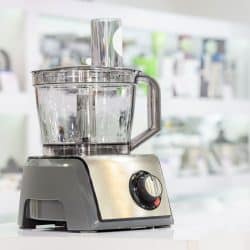
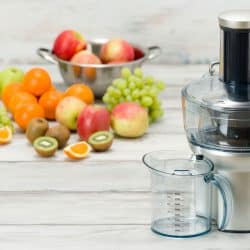
![Food processor blender or coffee grinder blades on wooden table, What Are The Parts Of A Food Processor? [5 Main Sections]](https://kitchenseer.com/wp-content/uploads/2020/10/Food-processor-blender-or-coffee-grinder-blades-on-wooden-table-250x250.jpg)
